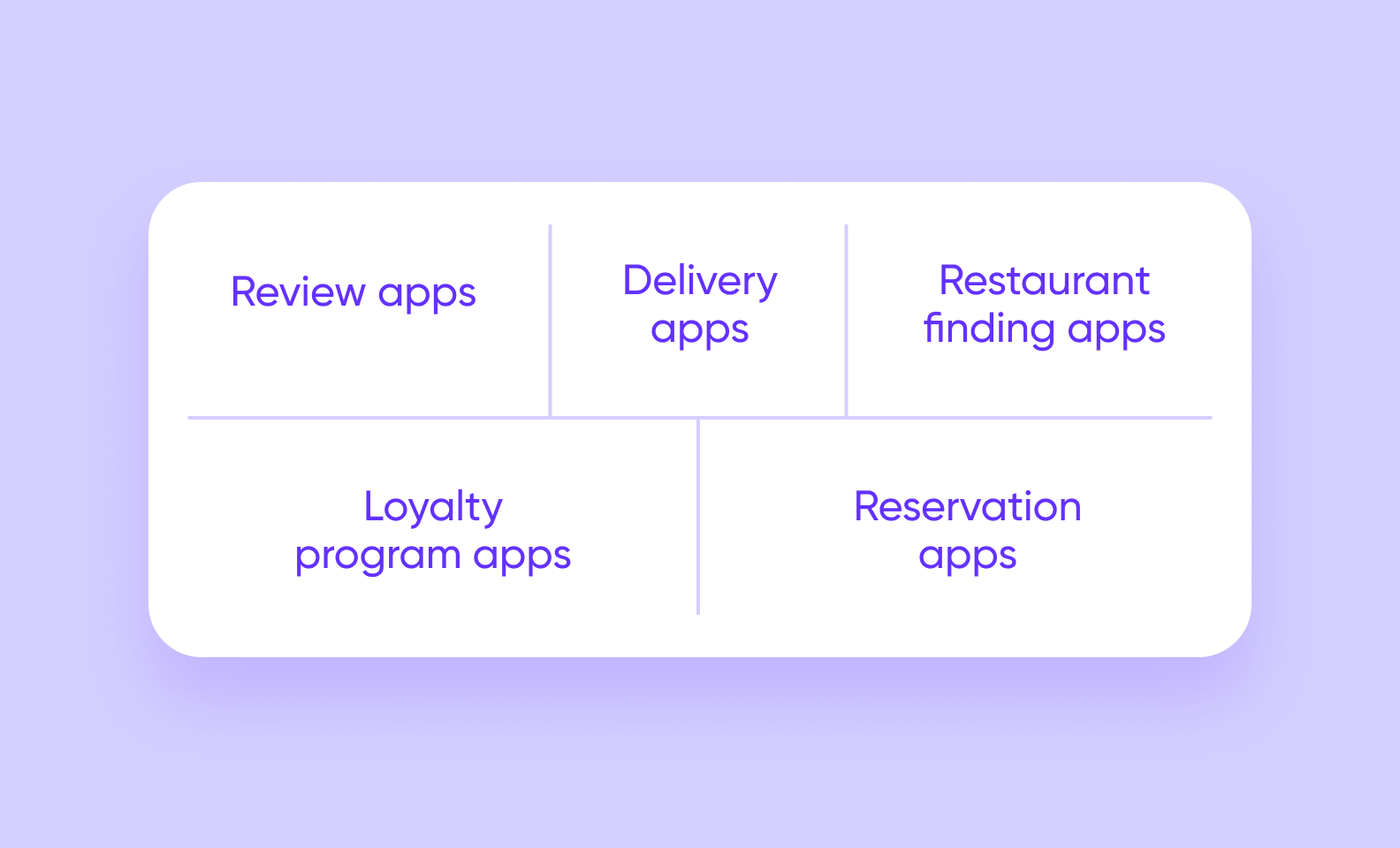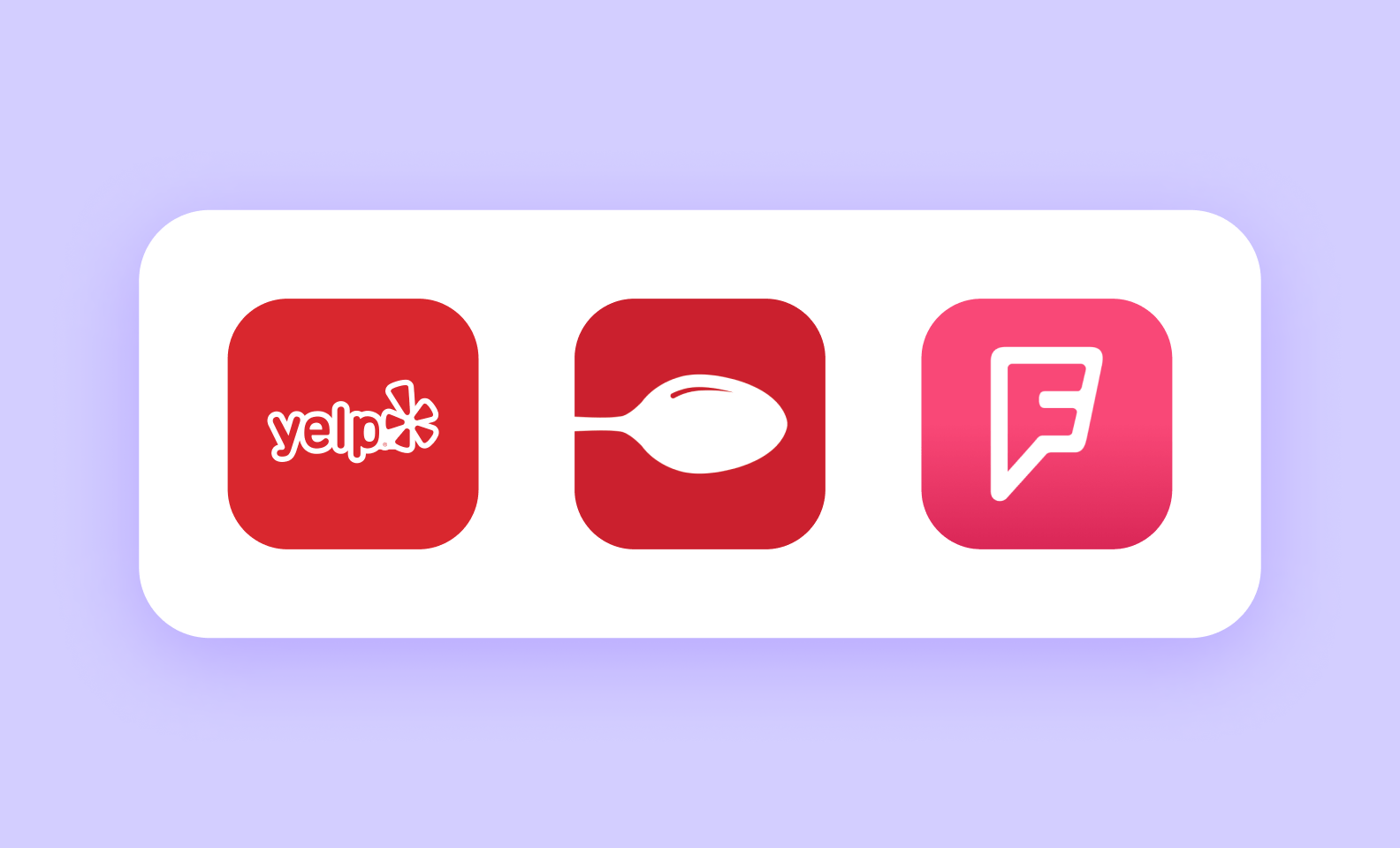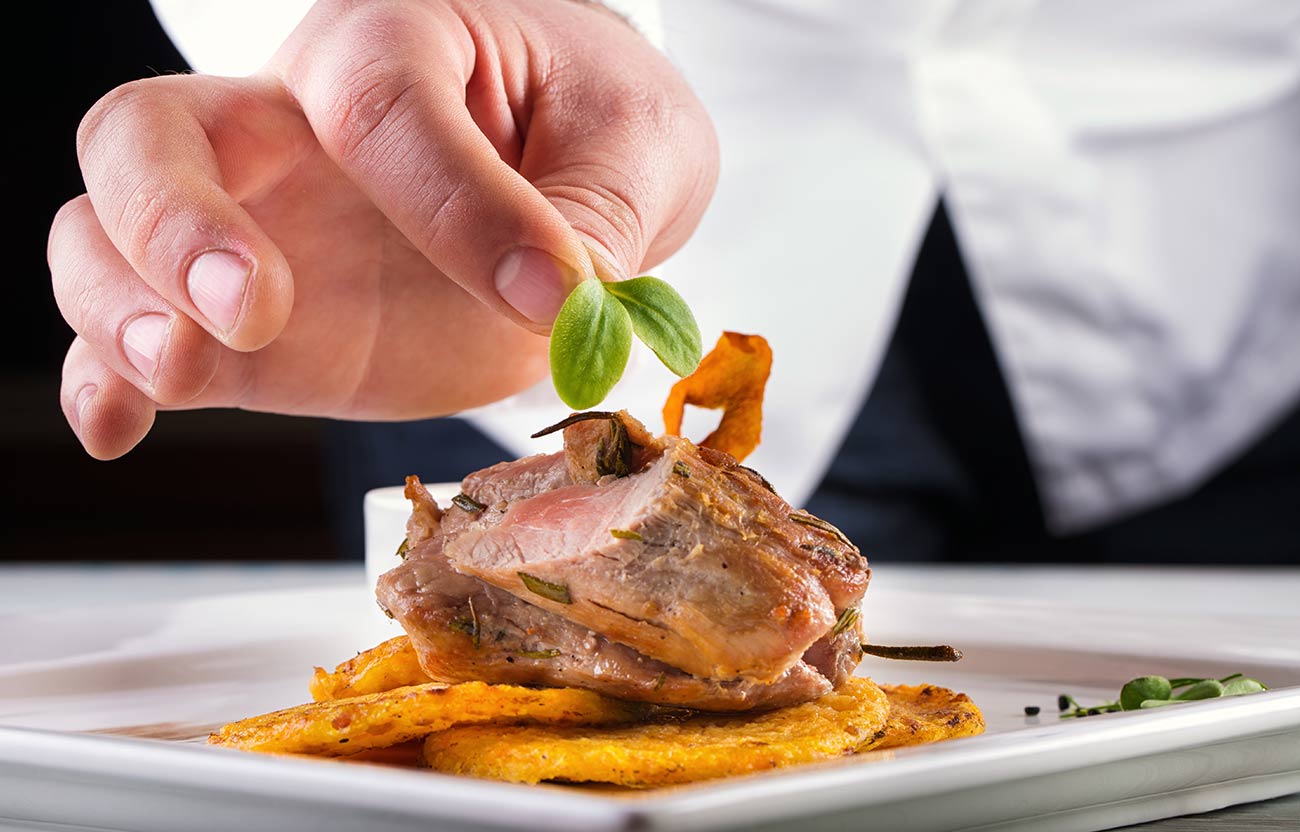
types of restaurant apps
Most common types of restaurant apps
Before jumping to restaurant mobile app development, let’s discuss what types of solutions exist out there and what business purposes they serve. Generally speaking, there are several ways to categorize restaurant mobile apps, based on who uses the platform and why. In this chapter, we will break down the most popular categories, and in the next one discuss successful examples. Let’s dive in!
Restaurant-supplier vs. restaurant-customer apps
One way to categorize restaurant apps is based on who is on the receiving end: the vendor or the customer. This will influence the app development process and user flow.

If you are not into the restaurant business and app development, you probably have not heard of examples for restaurant-supplier platforms. But you can always look them up. They include Kitchify, Choco, or Grecha.pro.

The restaurant-customer segment is very dense and has several subcategories, depending on the main activity users can perform on the app.


Online order and delivery apps are the most popular subcategory, as it helps customers place orders for takeout and get their favorite meals delivered to the doorstep. Examples are well-known to anyone across the world and do not need a long introduction: UberEats, Wolt, Pizza Hut, or even McDonald’s.




